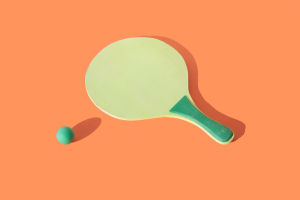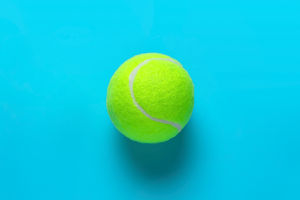Beach volleyball is one of the most exciting and physically demanding events in the Summer Olympics.
Athletes sprint, dive, and jump across hot sandy courts, executing plays with precision and skill.
But one question frequently puzzles spectators: why doesn’t the sand stick to the players as they sweat? This mystery involves a combination of scientific principles, technological advancements, and clever material design. Let's explore why sand doesn't cling to Olympic volleyball players and how this phenomenon enhances the sport.
The Sand: Specially Designed for Performance
Not all sand is created equal. The sand used in Olympic beach volleyball courts is meticulously selected and processed to ensure optimal performance. Unlike the gritty, coarse sand you might find at a typical beach, the sand used in Olympic venues is fine, uniform, and carefully chosen to reduce clumping. It is sourced from specific regions, such as riverbeds or particular mining areas, where the grains are naturally rounded and smoother.
The smoothness of the grains plays a crucial role. Coarse, jagged sand has edges that can interlock and stick to damp surfaces, such as sweaty skin. In contrast, the rounded sand grains used in Olympic venues are less likely to adhere to the players' bodies. The grains are also larger than typical beach sand, making them less likely to be blown away by wind or stick to moist skin.
The International Volleyball Federation (FIVB) has specific guidelines for the type of sand used in Olympic competitions. The sand must be free of pebbles, shells, and dust, which could cause injuries or discomfort to the players. It’s not just about comfort—this type of sand ensures that the game runs smoothly and that the athletes can move freely without the distraction of sticky sand clumps.
Hydrophobic Sand: A Technological Advantage
In addition to the natural properties of the sand, technological advancements have contributed to reducing stickiness. Some of the sand used in Olympic beach volleyball courts is treated to be hydrophobic, meaning it repels water. Hydrophobic sand is engineered to have a coating that prevents it from absorbing moisture. When athletes sweat or come into contact with water, the hydrophobic sand repels the liquid, preventing it from clinging to the skin.
This hydrophobic treatment works similarly to water-repellent fabrics. When water droplets land on the sand, they bead up and roll off, rather than being absorbed. This reduces the chances of the sand sticking to players as they dive or sweat, allowing them to maintain their focus and agility during the game.
Player Apparel: Lightweight and Moisture-Wicking Fabrics
Another key factor in why sand doesn’t stick to Olympic volleyball players is their specialized clothing. The athletes wear uniforms made from advanced, moisture-wicking fabrics that are designed to keep them cool and dry. These fabrics draw moisture away from the skin, helping sweat evaporate quickly. The faster the sweat evaporates, the less moisture remains on the skin for sand to cling to.
These lightweight, breathable fabrics are engineered for high-performance sports. They allow for a full range of motion while minimizing discomfort, and they play a critical role in maintaining an athlete’s focus during the intense physical demands of beach volleyball. The clothing is form-fitting, which helps to reduce friction between the fabric and the sand. Loose or baggy clothing would create more opportunities for sand to get trapped and stick to the body, which could affect the players’ performance.
The Role of Sweat and Body Oils
While sweat is often a factor in sand sticking to the skin, it’s not just moisture that plays a role. Body oils can also influence how much sand adheres to an athlete’s body. When players are physically active, their skin produces oils, which can create a slightly sticky surface. However, the combination of specially treated sand, moisture-wicking clothing, and the natural heat of the environment (which speeds up sweat evaporation) reduces the impact of these oils.
Additionally, beach volleyball is played in hot, sunny conditions. The heat causes sweat to evaporate quickly, meaning less moisture is available for the sand to adhere to. This fast evaporation, combined with the hydrophobic sand and high-performance apparel, keeps athletes relatively free from sand sticking to their skin.
Constant Movement Keeps Sand Off
Olympic volleyball players are constantly in motion, which also helps to minimize the amount of sand that sticks to them. As they move, jump, and dive across the court, any sand that does stick to their skin is naturally brushed off through the friction of movement. This dynamic activity, combined with the properties of the sand and the design of their uniforms, means that any lingering sand is quickly dislodged.
The lack of sand sticking to Olympic volleyball players is not a coincidence—it is the result of careful planning, scientific innovation, and advanced materials. The special sand used on the courts, treated to resist moisture, plays a significant role in preventing clumps from forming. Additionally, the athletes’ uniforms are made from high-performance, moisture-wicking fabrics that keep them cool, dry, and free from the discomfort of sticky sand. Together, these factors create an environment where players can focus on their game without the distraction of clinging sand.
By understanding the science behind beach volleyball, spectators can better appreciate the thought and effort that goes into ensuring the athletes perform at their best, even in challenging conditions. The combination of advanced technology and carefully chosen materials is what keeps the sand off the players, allowing them to compete at the highest level.


